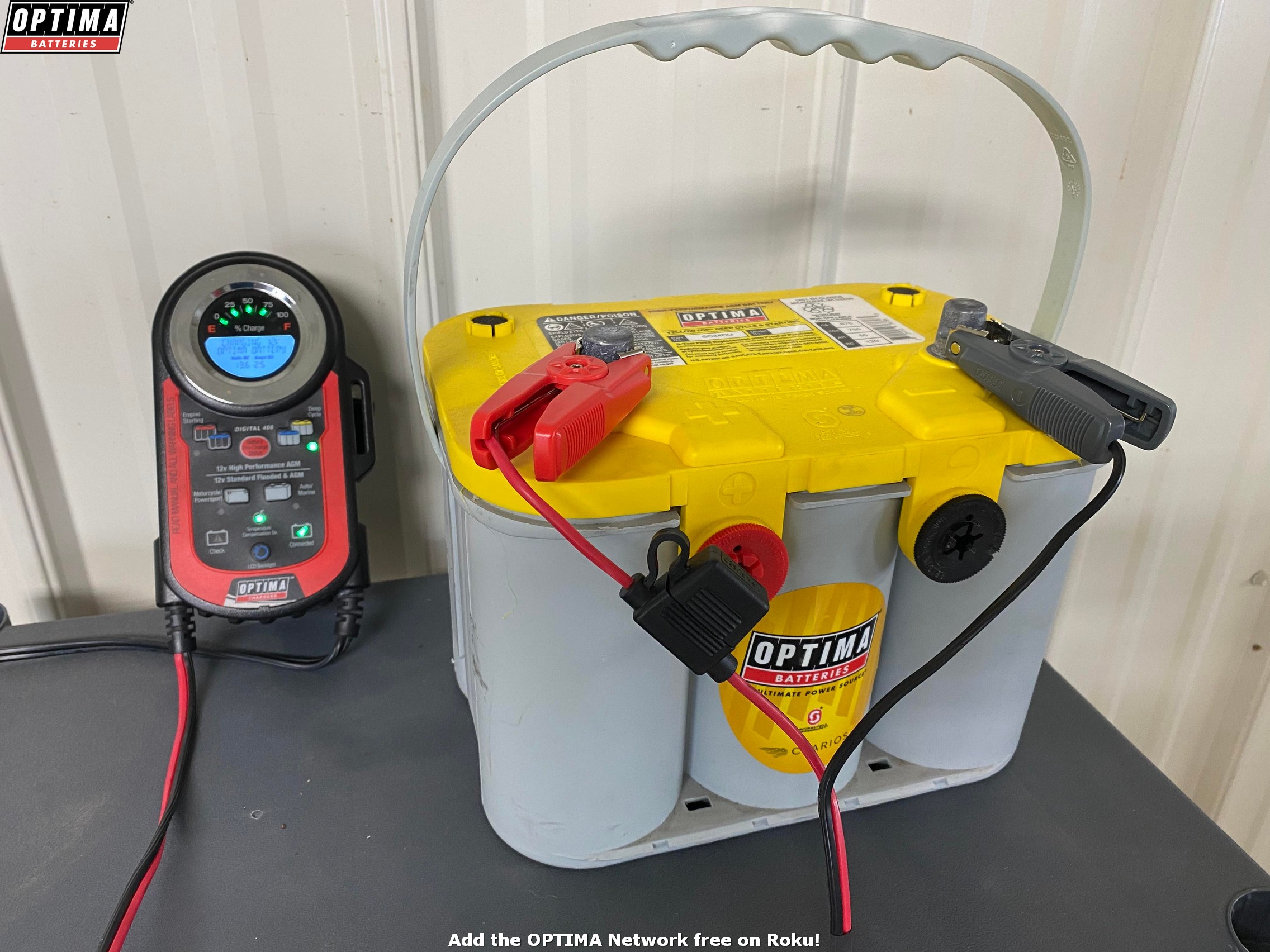As an Amazon Associate, I earn from qualifying purchases at no extra cost to you.
Can You Recharge Dead Car Battery
Yes, you can recharge a dead car battery using a battery charger or a jump start. Recharging a dead car battery is usually a straightforward process that can be done at home or by a professional service.
Having a dead car battery can be a frustrating experience, but with the right tools and knowledge, you can quickly get your vehicle back on the road. We will discuss the different methods for recharging a dead car battery, including using a battery charger or jump-starting the vehicle.
We will also provide tips on preventing future battery issues and ensuring your car stays reliable. By following these simple steps, you can easily recharge a dead car battery and avoid being stranded in the future.

Credit: www.optimabatteries.com
Why Car Batteries Die
Regular Wear And Tear
A car battery undergoes regular wear and tear due to the constant charging and discharging process while powering the vehicle’s electrical components.
Long Periods Of Inactivity
Extended periods of inactivity can cause a car battery to discharge and lose its charge, leading to a state of deep discharge, which can significantly reduce its lifespan.
Extreme Temperatures
Extreme temperatures, both hot and cold, can impact the chemical reactions within the battery, affecting its ability to hold a charge and causing premature failure.
Signs Of A Dead Car Battery
A dead car battery can be a frustrating experience for any driver. Recognizing the signs of a dead car battery is crucial in order to address the issue promptly and efficiently. Knowing when your car battery is on the brink of dying can help you prevent being stranded in inconvenient situations.
Dim Headlights
When headlights appear dimmer than usual, it could indicate a weak or dying car battery. Dim headlights are a common early sign of a failing battery and should not be ignored. If you notice this happening, it’s advisable to address the issue promptly.
Engine Cranking Slowly
If your engine cranks slowly or takes longer than usual to start, it may be a sign of a weak car battery. Slow cranking can indicate that the battery lacks the necessary power to start the engine efficiently. Pay attention to this warning sign to avoid potential breakdowns.
Electrical Malfunctions
Electrical malfunctions, such as flickering lights, power windows operating sluggishly, or malfunctioning radio, can be attributed to a dying car battery. These malfunctions may indicate that the battery is struggling to provide consistent power to the vehicle’s electrical components.
Also Read: Relay Clicking When Car Is Off
Steps To Recharge A Dead Car Battery
Safety Precautions
- Ensure proper ventilation when working with a car battery.
- Wear safety goggles and gloves to protect your eyes and hands.
- Avoid smoking or creating sparks near the battery.
Using Jumper Cables
- Position both vehicles close enough for jumper cables to reach.
- Connect the red jumper cable to the positive terminal of the dead battery.
- Attach the other end of the red cable to the positive terminal of the working battery.
Jump-starting With Another Vehicle
- Start the working vehicle and let it run for a few minutes.
- Try to start the dead vehicle, if successful, let it run to recharge the battery.
Using A Car Battery Charger
- Select a suitable charger based on your battery type and size.
- Connect the charger to the battery following the manufacturer’s instructions.
- Turn on the charger and allow the battery to charge fully.
Preventing A Dead Car Battery
Preventing a dead car battery is crucial for ensuring your vehicle starts reliably. Regular maintenance, driving the car, and using a battery tender are key ways to prevent a dead car battery. By following these practices, you can extend the life of your car battery and avoid the inconvenience of a dead battery when you need to use your vehicle.
Regular Maintenance
Regular maintenance is essential to prevent a dead car battery. This includes checking the battery’s condition and ensuring it is securely connected. It’s also important to clean the battery terminals regularly to prevent corrosion. Inspecting the battery for signs of wear and tear can help you identify potential issues before they become a problem.
Driving The Car
Regularly driving your car can help prevent a dead battery. When a vehicle sits idle for an extended period, the battery can deplete. Driving allows the alternator to recharge the battery. If you have multiple vehicles, consider rotating their use to prevent any single battery from remaining idle for too long.
Using A Battery Tender
Using a battery tender can help maintain the charge of your car battery, especially if the vehicle is not used frequently. A battery tender is designed to monitor and maintain the charge of a battery, preventing it from becoming depleted while the vehicle is not in use.
When To Replace A Car Battery
When it comes to car maintenance, one component that often gets overlooked is the car battery. However, a dead car battery can quickly ruin your day. That’s why it’s essential to know when it’s time to replace your car battery. In this section, we will discuss two key factors to consider – the age of the battery and consistently low voltage. Let’s dive in!
Age Of The Battery
The age of your car battery is a crucial factor in determining when it should be replaced. Most car batteries have a lifespan of around three to five years. So, if your battery is approaching or has surpassed this age range, it’s time to consider a replacement.
If you’re unsure about the age of your battery, you can easily find this information by checking the manufacturer’s label on the battery itself. Manufacturers often include a date code that indicates when the battery was produced. This code typically consists of letters and numbers, with the letters representing the month and the numbers representing the year. For example, A9 would indicate that the battery was manufactured in January 2019.
Consistently Low Voltage
Another sign that it may be time to replace your car battery is consistently low voltage. Ideally, a healthy car battery should maintain a voltage of around 12.6 volts when the engine is off. When the engine is running, the voltage should increase to approximately 13.7 to 14.7 volts.
If you find that your battery consistently falls below these voltage ranges, even after being fully charged, it may indicate that the battery is no longer holding a charge effectively. This can significantly impact your car’s performance and reliability, and it’s a clear sign that a replacement is necessary.
Frequent jump-starting is another indicator that it’s time to replace your car battery. While jump-starting a car is sometimes necessary in emergencies, if you find yourself needing a jump-start frequently, it suggests that your battery is no longer holding a charge properly.
Repeated jump-starts can also put additional strain on the electrical system of your car, potentially causing damage to other components. To prevent further issues and ensure reliable starts, replacing the battery is the most appropriate course of action.
In conclusion, knowing when to replace a car battery is essential for maintaining the overall performance and reliability of your vehicle. Being aware of the age of the battery, consistently low voltage, and frequent jump-starting are all signs that it’s time to invest in a new car battery. By staying proactive and replacing your battery when needed, you can avoid unexpected breakdowns and enjoy a hassle-free driving experience.

Credit: discover.hubpages.com
Common Mistakes To Avoid
Recharging a dead car battery can be a convenient and cost-effective solution to get your vehicle back on the road. However, if not done correctly, it can lead to various problems and even cause damage to your car. To ensure a successful and safe battery recharge, it’s important to avoid common mistakes that many people make. Let’s take a look at three key mistakes that you should steer clear of:
Incorrect Jumper Cable Connections
One of the most common mistakes people make when jump-starting a dead car battery is connecting the jumper cables incorrectly. It’s crucial to connect the cables in the correct order to prevent any electrical mishaps or damage to the vehicle’s electrical system. Here’s the correct sequence to follow:
- Attach one end of the red jumper cable to the positive terminal (+) of the dead battery.
- Connect the other end of the red cable to the positive terminal (+) of the charged battery.
- Now, connect one end of the black cable to the negative terminal (-) of the charged battery.
- Finally, attach the remaining end of the black cable to a metal surface on the engine block of the vehicle with the dead battery, away from the battery itself.
Following these steps will ensure the correct flow of electrical current and reduce the risk of sparking or damaging the vehicle’s electrical system.
Overlooking Safety Precautions
When recharging a dead car battery, safety should always be a top priority. Unfortunately, many people tend to overlook essential safety precautions, which can result in accidents or injuries. To protect yourself and your vehicle, keep the following safety tips in mind:
- Wear safety glasses and gloves to protect your eyes and hands from any potential hazards.
- Ensure the engine of both vehicles is turned off before connecting the jumper cables.
- Avoid smoking or using open flames near the battery to prevent the risk of explosions.
- Make sure the jumper cables are in good condition, with no exposed wires or damaged insulation.
- Keep bystanders at a safe distance to avoid any accidents.
By following these safety precautions, you can minimize the risks associated with recharging a dead car battery.
Using An Incompatible Charger
Using an incompatible charger is another mistake that people often make when attempting to recharge a dead car battery. Different batteries require different charging rates, and using the wrong charger can lead to overcharging or undercharging, both of which can damage the battery. To avoid this mistake, check the type of battery you have and ensure you are using a charger specifically designed for that type. Pay attention to the voltage and amperage ratings to ensure compatibility.
By avoiding these common mistakes and following the correct procedures, you can safely and effectively recharge a dead car battery, getting your vehicle back on the road in no time.
Alternative Solutions
When dealing with a dead car battery, there are several alternative solutions to consider. Whether it’s calling for professional assistance, using a portable jump starter, or replacing the car battery, each option comes with its own set of advantages.
Calling For Professional Assistance
Professional assistance can be a reliable solution in situations where the car battery is completely dead. Experienced mechanics possess the necessary expertise and equipment to diagnose and address battery-related issues effectively.
Using A Portable Jump Starter
Portable jump starters are handy devices that can provide a quick fix for a dead car battery. These compact and easy-to-use tools can swiftly revive the battery, allowing you to get back on the road without the need for external assistance.
Replacing The Car Battery
Replacing the car battery may be the ultimate solution if the battery is beyond resuscitation. Installing a new battery ensures long-term reliability and performance, offering a permanent fix to the issue of a dead battery.

Credit: www.wikihow.com
Conclusion
Recharging a dead car battery is feasible with the right tools and methods. By following the steps provided, you can revive a dead battery and avoid the inconvenience of a breakdown. Remember to prioritize safety and seek professional assistance if needed.
Stay informed and empowered to tackle this common vehicle issue!











